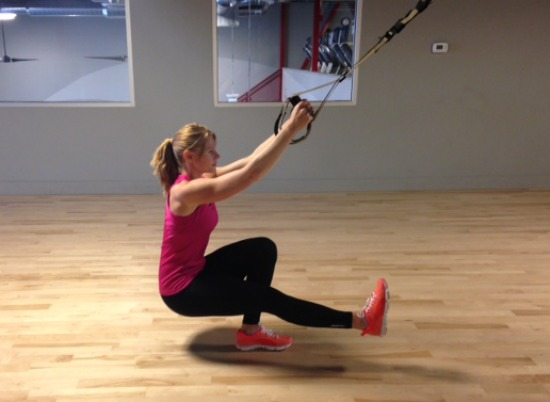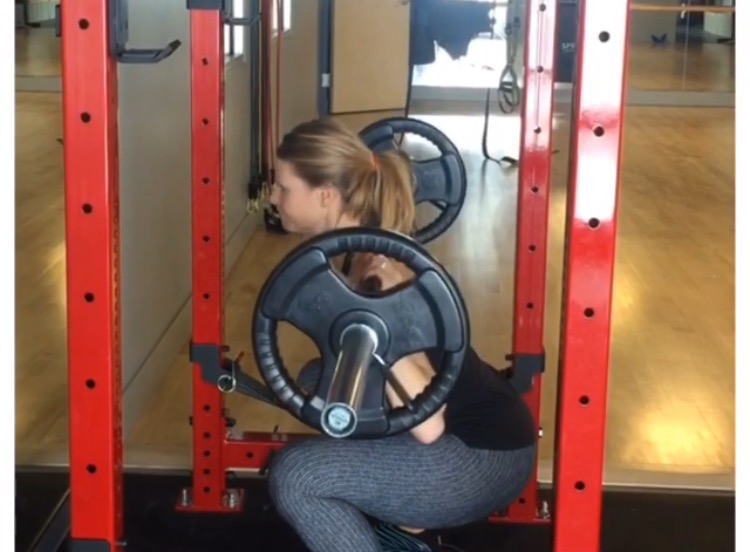Some thoughts and discussions from me.
Good morning, friends! How’s your week going?
I absolutely cannot fathom how it’s already Thursday, but I suspect the time is flying because I’ve got two programs launching in a few weeks, Christmas is on Friday, I’m having a dinner party Thursday, and I’m flying out to Florida on the 27th. That’s a busy next few weeks! It’s all good, though – I’m actually not stressing about it.
A couple weeks ago I mentioned the change in my training schedule, and today I want to talk about pistol squats.
A few years ago, I got pretty good at being able to do them – at least on one side. But then I switched my programming and pistol squat practice got lost in the dust. I’m sure this was a subconscious request from my brain because truthfully, I kind of hate pistol squats, because I suck at them. I know how to get better at them, but that doesn’t change the fact that they’re hard.
How to Do Pistol Squats
When working toward unassisted pistol squats here are some ways I build my way up to doing them unassisted:
Band-assisted pistol squats: (or TRX assisted)
[Tweet “Try this band-assisted pistol squat regression! via @trainerpaige”]
The last one is actually my favorite.
Anyway, as you also know, I’m currently lifting with a training partner two days each week. I’ve written our training program and focus, but I left some of the accessory exercises open for her to choose, as she’s studying for her NASM personal training certification.
Of course, for one of the movements, she chose a pistol squat. Doh! I should have listed exceptions! Kidding… 😉
This is actually a very good thing because we should do the things we suck at, and I know this. Putting it back on the plan has forced me to work at them again, and I can’t believe I’m saying this, but I’m actually enjoying it. Plus, it’s a great way to work on exerting force in a deep range of motion and promoting muscular balance unilaterally.
Moral of the story: We need to do the things we suck at.
*note: the exception to this rule is if the movement just doesn’t jive well with our bodies. Always, always, always stay within a pain-free range of motion, regardless of whether your “ass is to the grass” or not.
We tend to NOT to what we’re not good at because it’s simply uncomfortable. But it’s when we push past these comfort zones that progress is made; that barriers are broken.
That’s why I love working with a coach (yes, I’m a trainer who has a trainer, and I think every single trainer should have a trainer, for the mere fact that we understand the value in having one) or working with a knowledgeable training partner. It forces us outside our comfort zone.
For examples, I often get emails from runners who want to take the plunge into strength training. Nearly every time I work with a runner who wants to implement strength training into her routine, she hasn’t because running is comfortable and comes easy to her, while strength training is uncomfortable and intimidating.
But here’s the thing: once you step outside of that comfort zone, it only gets easier each time you do it.
[Tweet “How to Do Pistol Squats & Doing What You Suck At”]
What movements/exercise do you want to improve?



I totally agree that every trainer should have a trainer! (Even though I don’t currently have a trainer, ha!) I’m definitely not a fan of pistols but I hate snatches! When I was regularly doing CrossFit, the day we did snatches I always thought about not coming in. I LOVE doing dumbbell snatches but as soon as you give me a barbell and ask me to do them,I get in my head!
My confidence has grown so much in attempting things that I thought were too “hard” this year. Instead of, “no I can’t do that”, I face challenges with “Ok, I will try that.” Fully aware that there will probably be a learning curve and telling my perfectionist voice who doesn’t like to make mistakes to ZIP IT.
I am so excited to tackle new things next month!! I consider pistol squats one of those “you have arrived” movements. Like if you can do those, you are pretty much bad@$$ hahaha! You got this for sure!!
Totally agree. We do the things we can accomplish because it’s fun and we can do that little happy dance in our heads. I do Cross Fit and my current nemesis is the double under with a jump rope. I mean, how hard can it be it’s all timing .. lol. Makes me crazy that I can’t do it – yet!
Monica.
MonicaP recently posted…Lost in the closet – A beaded sweatshirt and jeans from INC.
I’m so with you on every trainer needing a trainer (I’m in the market for a lifting coach soon!). Pistol squats are always one of those moves that I want to be able to do…without the practice time! But you are right, it’s so valuable to practice the moves you are not so great at! Got a few of those on my list to work on in 2016!
It’s so true that we only like working on the things we’re good at. Unlike pull-ups for me, which I can get and then lose very easily. That’s why progressions are so important (for both the body and the morale).
I can only do pistol squats if I’m holding onto my foot as a counterbalance because my achilles are so short!
Alison @ Daily Moves and Grooves recently posted…Sick Day Eats